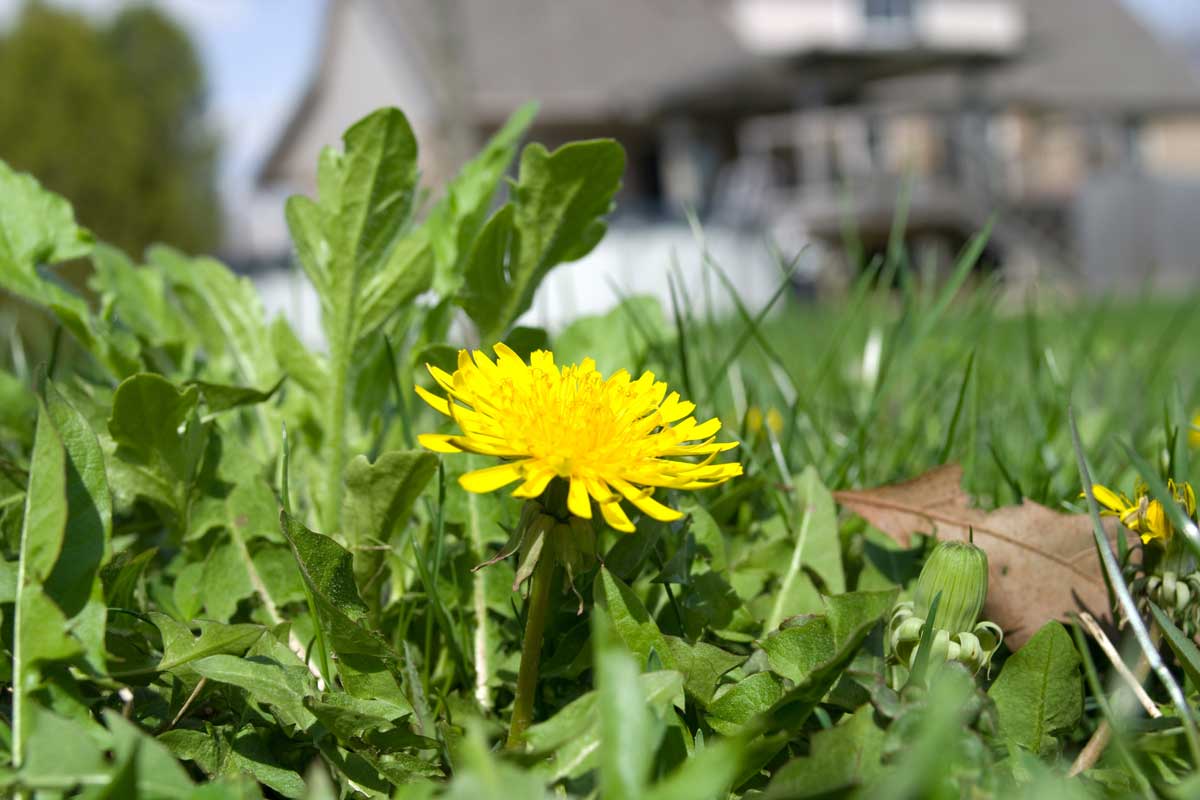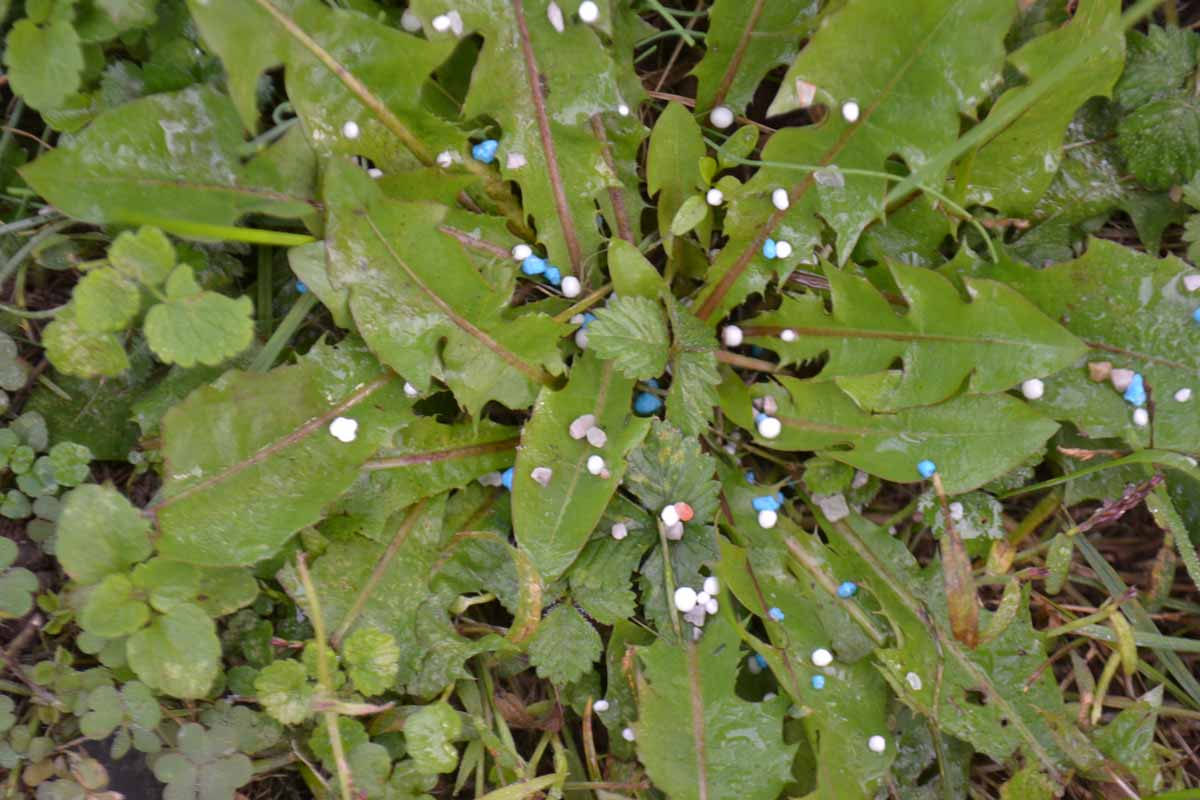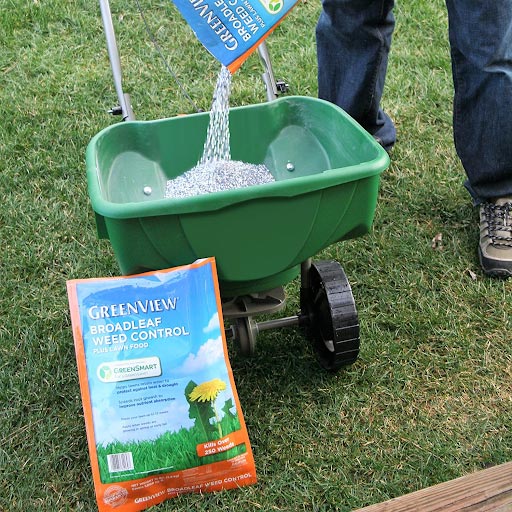 Dandelions are one of many broadleaf weed species that can be found in your backyard.
Dandelions are one of many broadleaf weed species that can be found in your backyard.
SimplyCreativePhotography / E+ / Getty Images Plus
Broadleaf weeds that invade your lawn are notoriously persistent and aggressive, making them difficult to control. With seeds that can travel for miles and last in your soil for years, getting rid of these weeds can seem an impossible task. Not only are they difficult to clear out, but broadleaf weeds can even be preexistent in both topsoil and low quality grass seed. Fortunately, with a few changes to your lawn maintenance habits and some assistance from broadleaf herbicides, you can get your yard back into shape.
What Are Broadleaf Weeds?
There are three different types of weeds: sedge weeds, grassy weeds, and broadleaf weeds. Broadleaf weeds, as their name suggests, are characterized by their large leaves. They produce thousands of seeds that travel by bird or by wind to find the perfect place to germinate.
Here are 10 common broadleaf weeds that may pop up in your lawn:
- Clover
- Common chickweed
- Dandelion
- Ground ivy
- Henbit
- Plantain
- Ragweed
- Shepherd’s purse
- Wild carrot
- Wild geranium
How Can You Control Broadleaf Weeds?
Though these weeds present a challenge, you can control and prevent broadleaf weeds. There are two main approaches to tackling these large leafed weeds: cultural management practices and the use of herbicides.
Cultural Management Practices
When you change how you care for your lawn, it’ll grow thick and tall, leaving no room for weeds to germinate. If you do the opposite, you’ll notice weeds popping up throughout your lawn and possibly taking it over. Best lawn care practices include:
- Only taking the top third off the grass plant each time you mow
- Use sharp mower blades to give your lawn a clean cut
- Choose the best fertilizer for your lawn needs according to a spring/fall regimen
- Use the right fertilizer for your lawn
- Apply fertilizer at the right time and in the right amount
- Water your lawn infrequently at 1"-2" per week, including rainfall
- Consider aerating your lawn every two years
- Dethatch your lawn when thatch reaches over ½"
- Overseed your lawn if it begins to thin out
 The wet leaves on this broadleaf weed allows for the fertilizer to stick to the plant for absorption.
The wet leaves on this broadleaf weed allows for the fertilizer to stick to the plant for absorption.
Herbicides: Timing is Everything with Broadleaf Weed Control
Broadleaf herbicides may be applied anytime the listed weeds are actively growing, but the best time to apply is in spring or early fall. In the fall before the frost, broadleaf weeds start conserving their energy to survive the winter. When you use weed control during this time, it’s very effective at killing the entire weed, including the roots.
Two important factors to remember when applying a broadleaf weed control - the weeds must be growing and actively showing in the lawn and the lawn MUST be moist when the granular weed and feed is applied. This is because the granules must stick to the weed leaves for the active ingredient to be absorbed by the weed plant, a process which kills the weed to the root. The first sight of a yellow dandelion in the lawn in spring is a good indicator that the timing is right to apply your broadleaf weed control product.

Our GreenView Broadleaf Weed Control Plus Lawn Food protects your lawn from over 250 broadleaf weeds, as listed on the label. And, not only does the GreenView Broadleaf Weed Control Plus Lawn Food have zero phosphorus (27-0-4 NPK), but the addition of lawn food will keep your lawn fed for up to eight weeks.